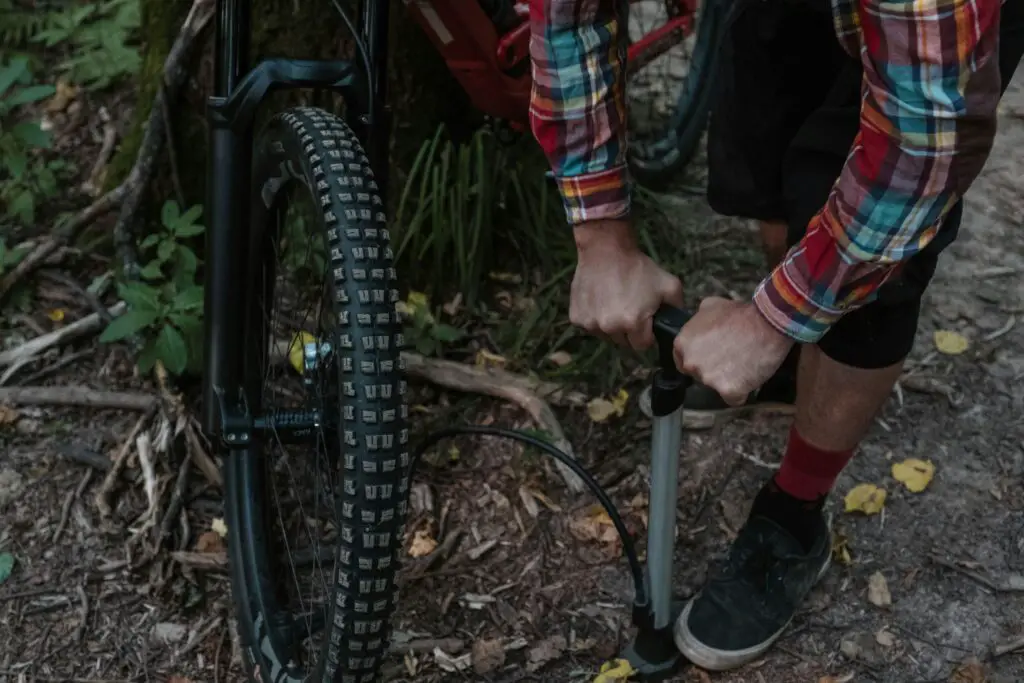How to use a bike pump? Using a bike pump might seem straightforward, but there’s a bit more to it if you want to do it right. Whether you’re a beginner or a seasoned rider, knowing how to properly inflate your bike tires can make a big difference in your ride quality and bike performance.
Here’s a step-by-step guide on how to use a bike pump effectively, covering everything from identifying valve types to checking tire pressure.
Step 1: Identify Your Valve Type
Before you start pumping, it’s crucial to identify what type of valve your bike has. There are two main types:
- Schrader Valve: These are the same as car tire valves and are wider. Schrader valves are common on mountain bikes and some hybrid bikes.
- Presta Valve: These are narrower, with a small locknut that you unscrew before inflating. Presta valves are common on road bikes and high-performance bikes.
Knowing your valve type will help you use the pump correctly and avoid any accidental damage.
Step 2: Preparing the Pump
Make sure you’re using the right type of pump. Most bike pumps today come with dual heads or adaptable heads that work for both Schrader and Presta valves. Some pumps even have two separate heads, so check your pump first.
- Switch the Pump Head (if needed): If your pump has a switchable head, adjust it to match your valve type.
- Unscrew the Cap: For Presta valves, unscrew the small brass cap on top. For Schrader valves, just remove the dust cap.
Step 3: Attach the Pump Head
This is where some people get frustrated, but it’s easy once you get the hang of it:
- Place the Pump Head on the Valve: Firmly push the pump head onto the valve. For Presta valves, make sure the locknut is fully unscrewed before doing this.
- Lock the Pump Head: Most pumps have a lever you need to flip to lock the pump head onto the valve. This ensures no air leaks out while you’re pumping.
Step 4: Pumping the Tire
Now it’s time to pump air into the tire. The technique varies slightly depending on the pump type.
- Hand Pump: These require a bit more effort. Hold the pump steady and start pumping in a smooth, consistent motion. It’s normal for it to feel tougher as the tire inflates.
- Floor Pump: With floor pumps, you’ll get better leverage. Stand on the base of the pump with both feet, grip the handle firmly, and pump steadily. Floor pumps usually inflate tires faster and with less effort.

Step 5: Check Tire Pressure
Overinflating or underinflating your tires can cause problems, so it’s important to get this right. Most bike tires have the recommended pressure (measured in PSI) printed on the sidewall. Here’s how to check:
- Monitor the Gauge: If your pump has a built-in pressure gauge, keep an eye on it while pumping. Stop when you reach the recommended PSI.
- Manual Check: If your pump doesn’t have a gauge, you can do a simple squeeze test. Press the sides of the tire; it should feel firm but still have a little give.
Step 6: Detach the Pump
Once you’ve reached the desired pressure, it’s time to carefully remove the pump head.
- Release the Lock Lever: Flip the lever back to its original position.
- Gently Pull the Pump Head Off: Be cautious not to yank it off too quickly, especially with Presta valves, which can be delicate.
For Presta valves, don’t forget to screw the brass cap back on after inflating.
Step 7: Final Checks
Before heading out, give your tires one last inspection. Make sure the valve is sealed, and there are no signs of air leaks. Spin the wheels to ensure they’re balanced and ready to go.
Troubleshooting Common Issues
- Pump Not Locking on Valve: Make sure the pump head is fully pushed onto the valve before locking it. If it’s still not working, check if the pump is set to the correct valve type.
- Air Leaking While Pumping: Double-check that the pump head is securely attached and the lever is fully locked.
- Difficulty Reaching Proper Pressure: If pumping feels too easy, the valve might not be fully open, or there could be a blockage. Reattach the pump and try again.
Conclusion
Using a bike pump is simple once you know the basics. Start by identifying your valve type (Schrader or Presta) and make sure your pump fits. Attach the pump securely, lock it in place, and start inflating while keeping an eye on the tire pressure.
Once you reach the right PSI, carefully remove the pump, check for any leaks, and you’re ready to ride. With practice, pumping your tires becomes quick and easy, ensuring your bike is always ready for a smooth and safe journey. Properly inflated tires last longer and keep your rides trouble-free.
Chinedu Chikwem holds a National Diploma in Motor Vehicle Mechatronics from the Institute of Management and Technology (IMT), Enugu, in partnership with Anambra Motor Manufacturing Co. Ltd. Passionate about the automotive industry, he specializes in simplifying complex vehicle concepts and making both traditional and electric vehicle terminology accessible. With a solid foundation in automotive engineering, Chikwem is focused on becoming a leading electric vehicle manufacturer, driving innovation and shaping the future of mobility both across Africa and globally.
Discover more from Chikwem
Subscribe to get the latest posts sent to your email.